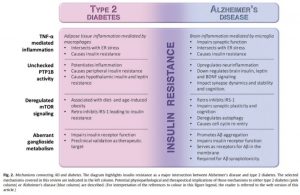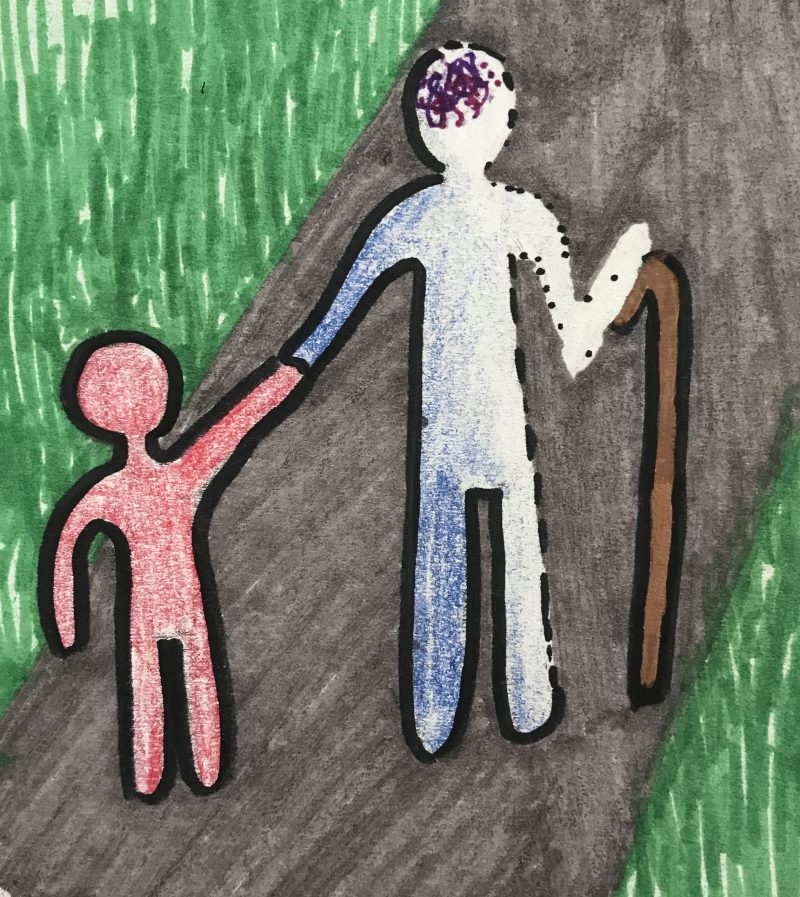Imagine in you and your two closest friends when your 80. Odds are one of you will have Alzheimer’s. Yes Alzheimer’s, that scary disease where your loved one starts to forget their life including you, or perhaps in the future you start to forget your loved ones. You may be more at risk to getting it than you would think… but you can also combat this pretty easily with diet, exercise, and a love for learning.
The National Institute on Aging defines Alzheimer’s Disease as “an irreversible, progressive brain disorder that slowly destroys memory and thinking skills and, eventually, the ability to carry out the simplest tasks.” The Alzheimer’s Associations 2018 data shows that presently 5.7 million American’s have Alzheimer’s Disease and this number is expected to rise to 14 million by 2050. They note that every 65 seconds another person develops Alzheimer’s, a disease killing 1 in 3 American seniors which is more than breast cancer and prostate cancer combined.
There are two forms: late-onset in which the symptoms appear in their mid-60s, and early-onset where the symptoms can appear between their 30s and mid-60s. Early-onset is very rare, only about 10% of Alzheimer’s cases, and due to genetics.
 Yet with all our technologies and knowledge about the disease we can’t truly diagnose AD until postmortem as it is determined by physical changes in the brain. These physical changes include build up of plaques and neurofibrillary tangles. Neuronal death and connection loss are also significant changes, these are simply not visible.
Yet with all our technologies and knowledge about the disease we can’t truly diagnose AD until postmortem as it is determined by physical changes in the brain. These physical changes include build up of plaques and neurofibrillary tangles. Neuronal death and connection loss are also significant changes, these are simply not visible.
The form and severity of Alzheimer’s one has depends on genetic and environmental factors. As I mentioned earlier early-onset is most commonly characterized by mutations in 1 of 3 genes: APP, PSEN 1, and PSEN 2. These mutations play into the breakdown of APP which is part of the production of the harmful forms of amyloid betas that form the amyloid plaques. Early-onset has helped scientists identify some of the key steps in the formations of these brain abnormalities that are generally found in late-onset.
The causes of late-onset are not yet completely understood. They likely contain a combination of genetic, environmental, and lifestyle factors that affect someone’s risk for developing Alzheimer’s. While they haven’t found specific genes that directly cause late-onset they have found a genetic risk factor in the APOE gene that can increase risk depending on the form. By 2015, they had also discovered and confirmed 33 regions of interest in the Alzheimer’s genome.
Environment and lifestyle play significant factors in the risk associated with development. Medical conditions such as obesity and diabetes, toxins, brain injury, and even diet play a role in Alzheimer’s. The risks increase as you age, accumulating up as different changes in the brain occur. Some are changes that can harm the neurons such as shrinking of areas, inflammation, free radical production, and energy production breakdown.
So preventative measures, that is what everyone wants to know. Its pretty easy actually… Diet, exercise, and keep learning!
Diet & Exercise – I go into depth about Alzheimer’s and Type 2 Diabetes further down, but the gist is healthy diet and exercise keep your body healthy. They decrease you chances of developing other medical conditions in the present and the future.
Learning – This one is surprising isn’t it? It’s actually a lot simpler than you would guess and it is highly important. As Alzheimer’s involves the loss of neural connectivity the more connections you make, by learning, are vital. The more you have means the more you can lose and the less affects you are likely to see. The video below talks about a study that found this, Dr. Genova mentions it towards the end.
Diabetes and Alzheimer’s
Recent studies have shown that there is a link between type-2 diabetes (T2D) and Alzheimer’s disease (AD). One study showed that T2D nearly doubles the risk of dementia and conversely AD patients are at an increased risk to develop T2D. The commonality between them is insulin. Insulin is a hormone, primarily created in the pancreas, that controls blood sugar levels and aids in using and storing energy. In the brain this insulin works to protect the neurons, strengthen connections, plays a role in cognition and is required for long term memory.
This insulin resistance stems from many sources, the image below goes over the similarities between the two diseases.

Because of all this, medications that have been approved to treat diabetes and obesity can help counteract some effects of AD in animal models. The mechanisms above may provide new targets for disease modifying therapies.
Everyone will be impacted with Alzheimer’s somehow at least once in your life. My story was with my great grandmother who suffered from dementia for years until she died this past summer at the age of 98. Even 8 years ago when we went to visit for her 90th birthday, she couldn’t recognize me. She knew who I was once I explained but it did not click. However, until her dying day, even when she couldn’t really take care of herself, out of all her grandchildren, great grandchildren, and great great grandchildren grandma remembered my little brother the most. He was the namesake of her husband and was in a way the favorite because of that special connection. He held that emotional bond, and even with Alzheimer’s those can’t be broken easily. The memories may be lost but the feelings are forever.
